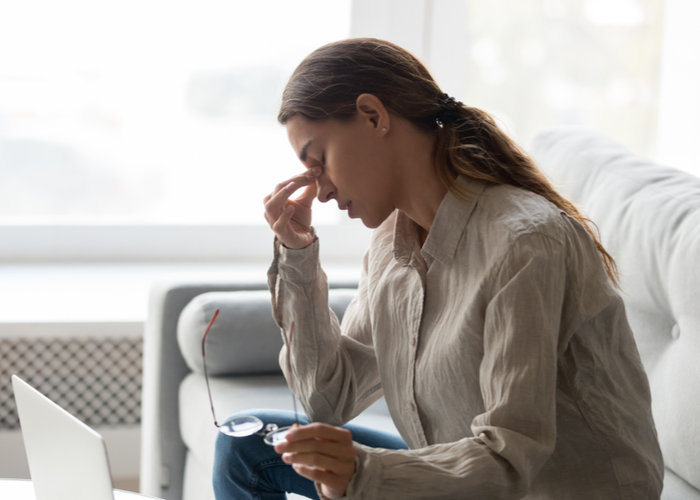
- Vision Migraine - A migraine with blind spots, strobing or flashing lights in both eyes
- Ocular Migraine - A migraine with vision loss or temporary blindness in one eye
Vision Migraines
Anyone who has suffered a migraine knows how deeply painful and debilitating they can be. In addition to pain, many people who experience migraines also experience vision related symptoms such as light sensitivity, blind spots, blurred vision, double vision and flashing or strobing lights in both eyes. These visual symptoms are known as vision migraines. The visual distortion is usually experienced for up to around 30 minutes and is experienced in both eyes and are commonly referred to as “aura”. Common patterns to the visual disturbance include zig zag or a radiating type of artefact.
Ocular migraines are different. Rather than simultaneous vision symptoms in both eyes, ocular migraines are a rare condition characterised by temporary vision loss or even blindness in one eye , either during a migraine attack or after. This vision loss or blindness can last for up to an hour and can occur during or after a migraine, or even occur without pain at all.
Even if an ocular migraine occurs without pain, they are still debilitating, with the vision loss commonly affecting central vision making it hard if not impossible to read, drive or otherwise perform everyday tasks.
As the symptoms of ocular migraines can be similar to those of a number of other conditions including Multiple Sclerosis or stroke, seeking medical advice is of vital importance, if only to rule out potentially life threatening conditions.
If you’re experiencing migraines with visual symptoms, or experiencing temporary vision loss without pain, don’t ignore the signs. Seek medical advice. The easiest and fastest way to find help for your migraines and associated vision problems is with MyHealth1st .
What Causes Ocular Migraines?
People who experience ocular migraines commonly experience the vision loss in the same eye each time they have an attack, this is due to the fact that the vision loss is caused by spasms or reduced blood flow in the blood vessels in the retina or behind the eye. Ocular migraines, much like other forms of migraines appear to be mostly genetic, with around 70% of people who experience migraines having a family history of migraines. Women and people over 40 are also more likely to experience all forms of migraine.
Migraines appear to be the result of the activation of a mechanism in the brain that releases inflammatory chemicals that affect the nerves and blood vessels in the head and brain, leading to pressure and pain. Although imaging has shown that there is a change in blood flow throughout the brain during an ocular of visual migraine, the exact reasons for the visual symptoms coming on and going into remission currently remains unknown. The exact triggers for migraines differ from person to person, but can include:
- Bending over
- Dehydration
- Excessive heat
- Exercise
- Flickering lights
- Foods such as aged cheese, red wine, caffeine, chocolate and smoked meat
- High blood pressure
- Lack of sleep
- Low blood sugar
- Smoking or being exposed to cigarette smoke
- Some contraceptives
- Stress, both physical and emotional
- Strong or overpowering smells like perfume
Treatment for Ocular Migraines
Much like other migraines, ocular migraines are transitory so when you experience the symptoms of a migraine it’s best to stop what you are doing and rest your eyes until it passes. This is especially true if you’re driving or performing some kind of task that could result in harm to yourself or others if your vision is impaired. Taking over the counter or prescription painkillers may also be a regular part of treatment depending on the advice of a doctor, neurologist or ophthalmologist . In some cases, depending on specific triggers you may be prescribed preventative medications such as blood pressure medication, anti-epileptic drugs or antidepressants to reduce the instances of migraines.
Treatments vary from person to person, but in all cases of migraine, keeping a diary of your activities, food and drink so you can help pinpoint possible triggers of migraines and avoid them in the future. If your migraines appear to be stress related, therapy including mindfulness and stress relieving training could be valuable. For other triggers, eating healthy food on a regular basis and getting plenty of sleep can also help reduce the instances of migraine attacks.